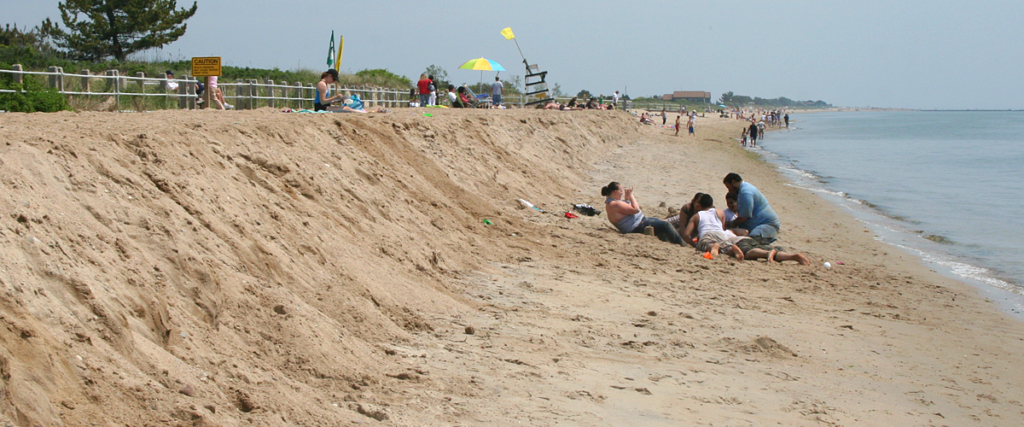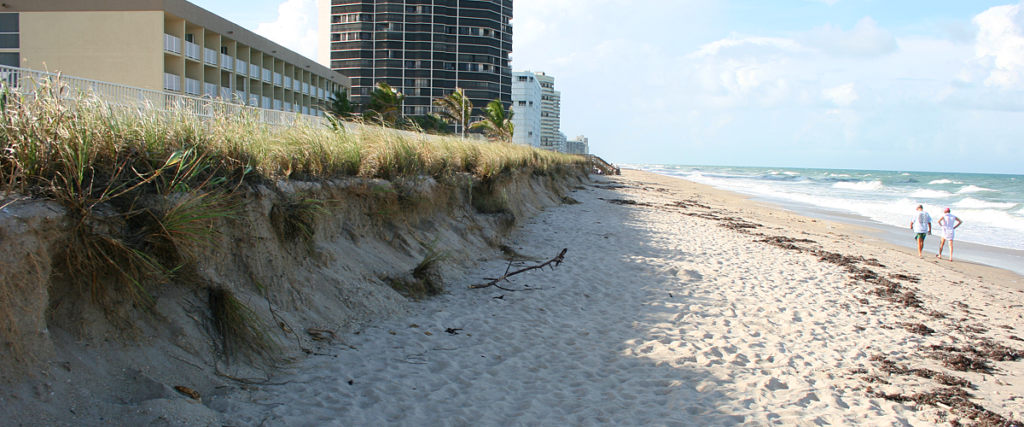Rising Seas, or Falling Land Elevation?
Our shorelines are under attack, drastic changes show up in as little as one season.

But why, and, what can we do about it?
“The idea that Global Warming is a natural cycle is well understood from paleo data covering the past 1 million years. Is there a difference between current climate, and the natural cycle? For the past million years the natural climate has oscillated between warm periods and ice ages. This shifting in and out of warm periods and ice ages is correlated strongly with Milankovitch cycles. In order to understand the difference between natural cycle and human-caused global warming, one needs to consider changes in radiative forcing and how this affects systems on earth such as the atmosphere, vegetation, ice and snow, ocean cycles and related effects. The current radiative forcing levels are clearly outside of the natural cycle range.”*
*http://ossfoundation.us/projects/environment/global-warming/natural-cycle
In other words, we are likely seeing a natural cycle being exacerbated by man-made contributions.
However, our beleaguered shorelines are facing additional pressures other than climate change — like storms, shoreline construction, severe erosion, deeper ports to accommodate ever-larger ships, dredging, seawalls, and many other factors.
Whatever you believe, the problems facing our shorelines are substantial. Many people have heard the estimates of sea levels rising as much as a foot (30cm) by 2100. It is very possible it could be far more or less.
So why is it that the beach I walked on last summer now underwater?
It’s not “global warming”, it is beach erosion! The loss of elevation (volumes of sand) and the loss of the protective dunes — In a manner of speaking, is because the level of the land has dropped.
Ribbons of Sand: Beaches and shorelines are dynamic
Beaches and shorelines are dynamic but historically the net sediment loads (up and down the beaches) tended to be relatively stable. Now, many man-made impediments such as years of dams blocking natural fluvial erosion, loss of wetlands and buffer zones, shoreline construction, high-energy hard structures (groins and shoreline armoring) are reducing the sediment load and changing the littoral drift and nearshore current patterns. Unfortunately for many of our beaches, erosion pulls the sand to the loss point offshore and out of the normal system.
This is easily observed on nearly every shoreline in the U.S.A., to differing degrees. Here on the East coast of the U.S. it is common for beach “renourishment” to be performed primarily through dredging and the spoils are spread on the affected beach. But because the underlying causes (of high energy) are not addressed by the solution, very often the erosion will reclaim the “fixed beach” in a matter of months or a few years. See how similar the damage is on two beaches, thousands of miles apart.


Can this problem be mitigated?
Yes.
The simple answer is “Yes”. If you have a 5-foot beach elevation and a 1-foot sea-level rise, you are still 4-feet above sea-level.
Your shoreline is still protected. But we are routinely seeing beach elevation losses to erosion in feet, not just inches.
Technology is available, such as the Enviroshore Stabilization System (ESS) that de-energizes the wave energy allowing for the re-sedimentation process to resume, thus reversing erosion and “building” elevation. Systems installed in the 1980’s using similar methods to ours resulted in sustained and continuous sand replenishment. These beaches became better at “holding” sand and absorbing energy. These beaches become wider and higher. Aside from being better at absorbing storm wave energy, they have the added benefit of being a feeder beach supplying sand to adjacent locations and creating a cycle of sustainable, wider beaches.
EnviroShore Systems, Inc.
Erosion and the loss of land is an acute problem facing every shoreline community. A better effort has to be made to allow for solutions like ESS. In most cases, States, counties and municipalities fall back on short-sighted “solutions” that are known to exacerbate erosion and are environmentally destructive. Current regulations and classifications make it difficult to implement new methods, but we’re changing that.

